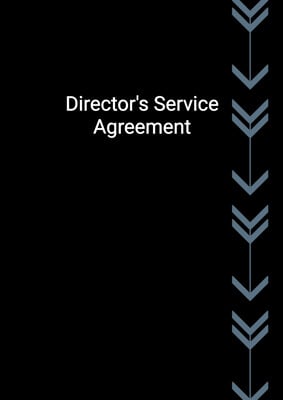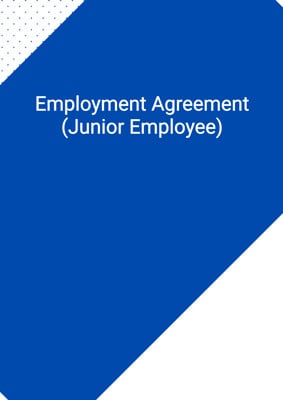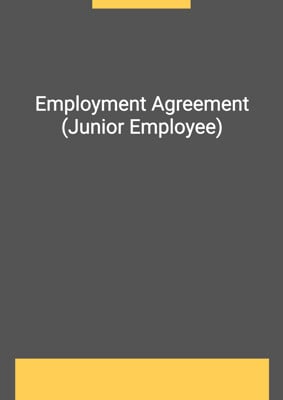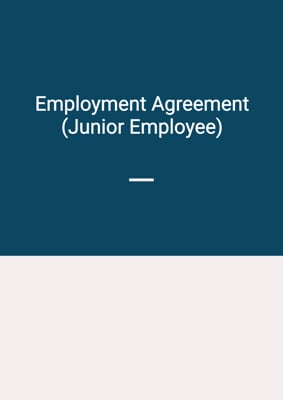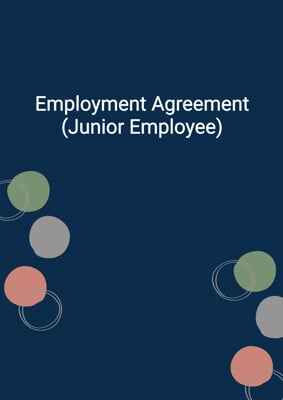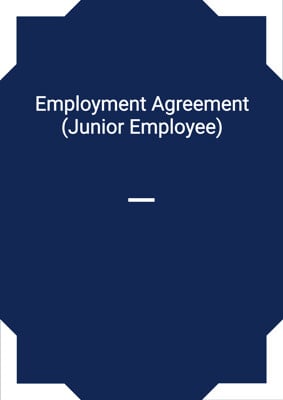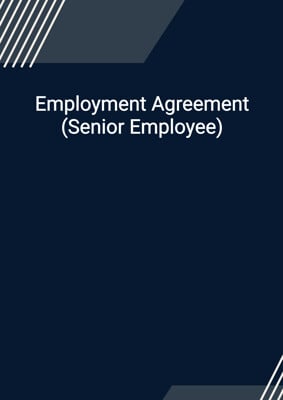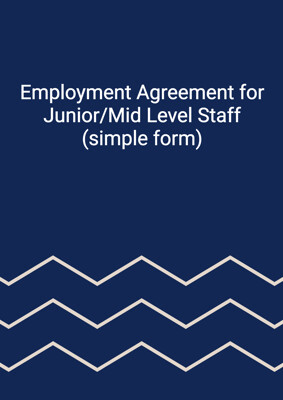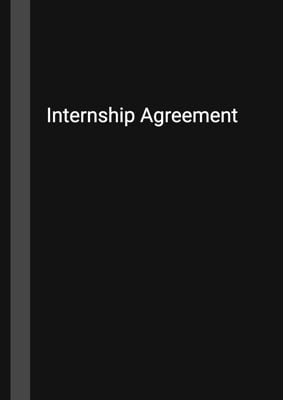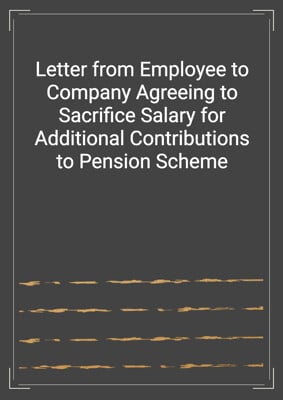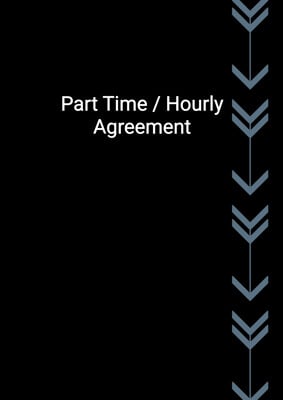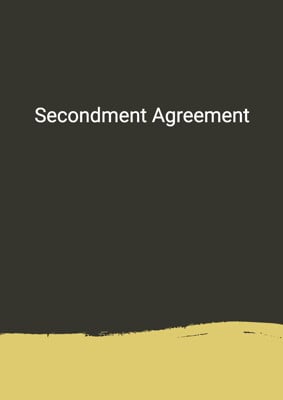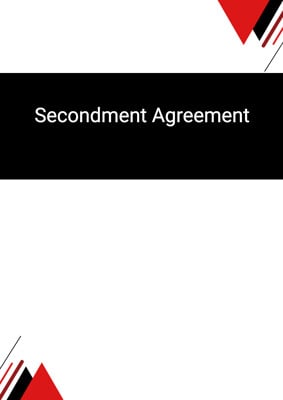How to Tailor the Document for Your Need?
01
Create Document
Fill in the details of the parties. You can click the "Fill with Member’s Information" button to complete it with information saved to your account.
02
Fill Information
Please fill in any additional information by following the step-by-step guide on the left hand side of the preview document and click the "Next" button.
03
Get Document
When you are done, click the "Get Document" button and you can download the document in Word or PDF format.
04
Review Document
Please get all parties to review the document carefully and make any final modifications to ensure that the details are correct before signing the document.
Document Preview
Document Description
The Employment Agreement (Senior Employee) is a document that outlines the terms and conditions of employment between a company and a senior employee. It is an important document as it establishes the rights and responsibilities of both parties and ensures that both parties are aware of their obligations. The document begins with a detailed introduction, providing information about the parties involved, including their names and addresses. It also includes the employee's identification information, such as their employee ID.
The document is divided into several sections, each addressing different aspects of the employment agreement. The first section focuses on the duties and job description of the employee. It specifies the position of the employee and the level of commitment expected from them. It also mentions that the employee will report directly to a specific person within the company.
The second section covers the period of employment. It states the start date of the employment and mentions that it is for an indefinite period. It also outlines the normal working hours and the entitlement to annual leave and sick leave. It further explains that the employee's period of continuous employment for statutory employment rights purposes will commence on the start date.
The third section discusses the probationary period of the employee. It states the duration of the probationary period and explains the conditions under which the employment can be terminated during this period. It also mentions that the employee's period of continuous employment will be calculated from the start date.
The fourth section addresses the remuneration of the employee. It specifies the monthly salary and mentions that the employee will be enrolled in the relevant mandatory provident fund scheme. It also mentions that the employee will be entitled to a percentage of the ordinary shares of the company, subject to certain conditions.
The fifth section focuses on discipline. It states that the employee agrees to abide by all the rules and regulations of the company and not to engage in any activities that may conflict with the interests of the company. It also mentions that the employee should disclose any conflicts of interest or breaches of obligations.
The sixth section covers the termination of the employment agreement. It outlines the various circumstances under which the agreement can be terminated, including breach of the agreement, notice by either party, death or incapacitation of the employee, withdrawal of permissions, conviction of a criminal offence, bankruptcy of the employee, gross misconduct, or serious or repeated breach of the agreement. It also mentions that the employee may be required to assist the company in cases of litigation.
The seventh section discusses the resolution of disputes. It states that any dispute related to the employment agreement will be settled by voluntary mediation, and if mediation is unsuccessful, the parties will submit to the jurisdiction of the jurisdiction state courts.
The eighth section states that the agreement is the entire agreement between the parties and that any modifications must be in writing and signed by both parties. It also mentions that the agreement binds and benefits both parties and any successors of the company. It further states that time is of the essence of the agreement and that the provisions of the agreement are separate and divisible. It also clarifies that no person who is not a party to the agreement has any rights to enforce its provisions. Finally, it mentions that the employee consents to the processing of their personal data by the company.
The ninth section addresses confidentiality. It states that the employee will have access to confidential information of the company and agrees to keep such information confidential. It also mentions that the employee will not make unauthorized copies of the company's business secrets or remove them from the company's facilities.
The tenth section covers intellectual property. It states that the employee will promptly furnish the company with a record of any intellectual property created during the employment and waives any moral rights over such intellectual property. It also mentions that the employee agrees not to have any conflicting employment agreements and will sign any further documents necessary for the company to obtain rights to the intellectual property.
The eleventh section discusses non-solicitation and non-compete. It states that the employee agrees not to solicit or approach any of the company's customers, clients, manufacturers, or suppliers upon the termination of the employment agreement. It also mentions that the employee agrees not to communicate with any covered individuals regarding the termination of their employment or hire or assist others in hiring or retaining covered individuals. It further states that the employee will not establish any competing business or activity within a certain distance of the company's facilities for a specified period of time.
The twelfth section clarifies that a person who is not a party to the agreement has no right to enforce its terms.
The thirteenth section states that the terms of the agreement are offered by the company and accepted by the employee, as evidenced by their signatures. It also includes a statement from the employee acknowledging that they have received a copy of the agreement and have read, considered, and understood its terms and conditions.
In summary, the Employment Agreement (Senior Employee) is a comprehensive document that covers all aspects of the employment relationship between a company and a senior employee. It establishes the rights and obligations of both parties and provides a framework for resolving disputes. It is an essential document for ensuring a clear and mutually beneficial employment relationship.
How to use this document?
1. Review the document: Read the entire Employment Agreement (Senior Employee) document carefully to familiarize yourself with its contents.
2. Understand the parties involved: Identify the company and the employee mentioned in the agreement, along with their names and addresses. Take note of the employee's identification information.
3. Duties and job description: Pay attention to the section that outlines the duties and job description of the employee. Understand the position they will be employed in and the level of commitment expected from them.
4. Period of employment: Note the start date of the employment and the duration of the agreement. Understand the normal working hours, entitlement to annual leave and sick leave, and the calculation of the employee's period of continuous employment.
5. Probationary period: Take note of the duration of the probationary period and the conditions under which the employment can be terminated during this period.
6. Remuneration: Understand the monthly salary of the employee and their enrollment in the mandatory provident fund scheme. Note the conditions for the employee to be entitled to a percentage of the company's ordinary shares.
7. Discipline: Familiarize yourself with the rules and regulations of the company that the employee is expected to abide by. Understand the obligations regarding conflicts of interest and breaches of the agreement.
8. Termination: Review the circumstances under which the employment agreement can be terminated. Take note of the employee's obligations upon termination and their potential assistance in cases of litigation.
9. Dispute resolution: Understand the process of voluntary mediation and the jurisdiction of the jurisdiction state courts in case mediation is unsuccessful.
10. Confidentiality: Note the employee's obligations regarding the confidentiality of the company's business secrets and the prohibition on making unauthorized copies or removing such information from the company's facilities.
11. Intellectual property: Understand the employee's obligations regarding intellectual property created during the employment and the assignment of rights to the company. Note any further documents that may need to be signed.
12. Non-solicitation and non-compete: Familiarize yourself with the employee's obligations regarding solicitation of the company's customers, clients, manufacturers, or suppliers, as well as the prohibition on establishing competing businesses or activities.
13. Rights of third party: Understand that third parties have no right to enforce the terms of the agreement.
14. Execution: Note the signatures of the company and the employee, indicating their acceptance of the terms and conditions of the agreement. Understand the employee's acknowledgment of receiving a copy of the agreement and their agreement to its terms and conditions.
Please note that this guidance is a summary and does not cover all the details of the Employment Agreement (Senior Employee) document. It is recommended to consult with legal professionals for a comprehensive understanding and to ensure compliance with applicable laws and regulations.

